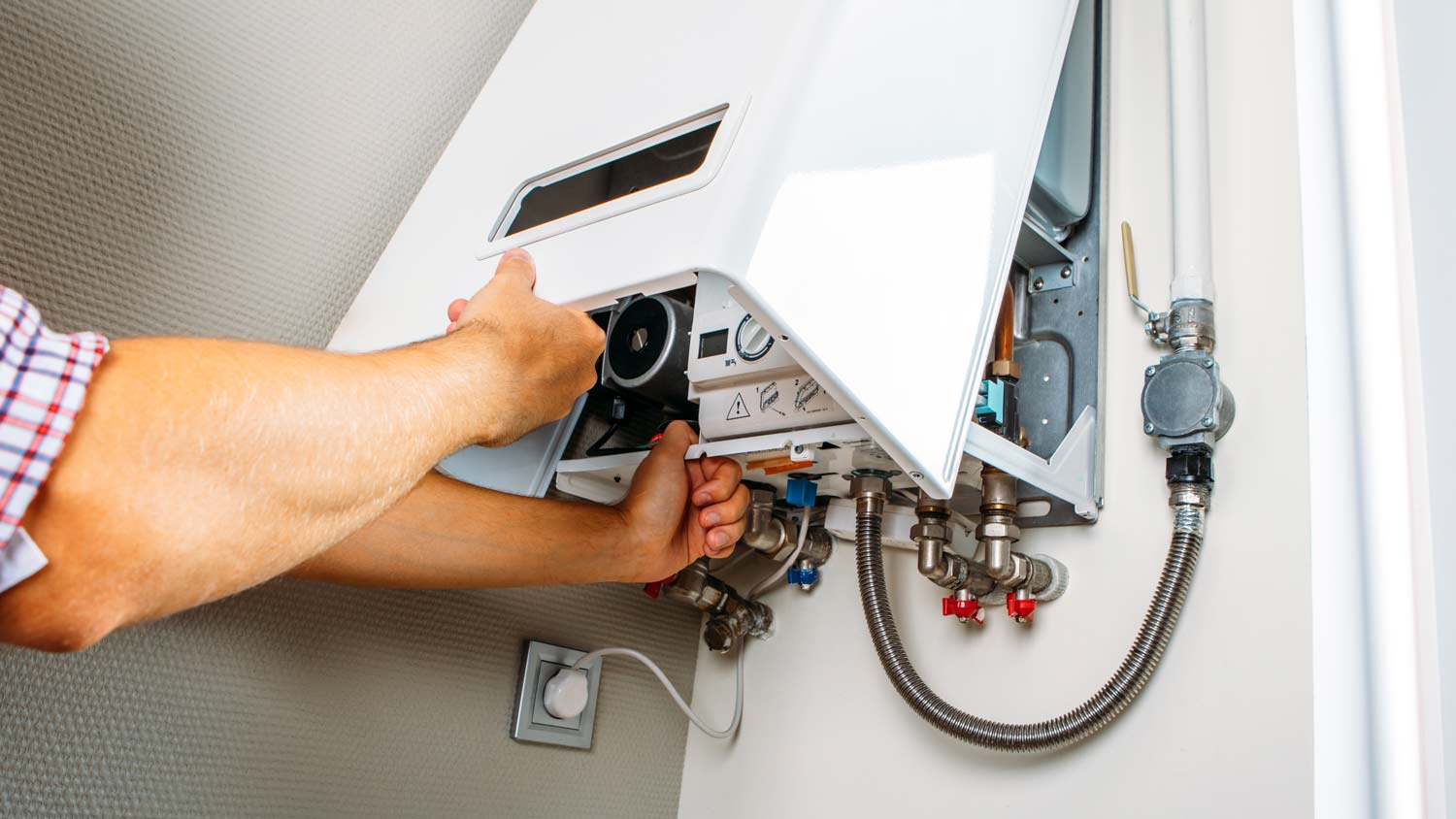
What you’ll pay in Columbus, OH, for furnace repairs depends on many factors. Here’s a breakdown of what can go wrong and the cost to fix those issues.
Bring the heat by staying up to date on boiler maintenance


A boiler doesn’t boil water, but it does do a good job of generating hot water and creating steam from water. Because of this, boilers do more than provide hot water for your home—they also can heat your home by dispersing the steam through pipes and radiators throughout your house.
Boilers require maintenance just like anything else mechanical. Follow these tips to ensure your boiler is working at peak performance to keep your showers nice and hot and your rooms warm and cozy in the winter months.
Vents and chimneys may deteriorate over time since they get a lot of dirt and debris collected in them as air moves in and out day after day.
Check for holes or gaps in the chimney and examine where the vent meets the boiler to make sure it’s still securely connected.
A quick look should be enough to see any problems, but do it a few times a year to stay on top of any changes.
Watch for water around the heat exchanger, which is the place where the gas or oil heat warms up the water that is pumped into your home. If you see small puddles of water, it may be time to bring in a pro to replace your heat exchanger.
As with any home heating system, such as water heaters or HVAC units, water use and its evaporation can cause the parts to break down slowly.
This isn’t as bad as it sounds. Bleeding a radiator simply eliminates excess hot air from the system, which increases efficiency because too much air makes it harder for the boiler to keep everything warm and toasty. The process here is simple. At the beginning of the heating season, walk through your home and open up the air bleed valve on each radiator. They’ll leak water, so place a bucket underneath where the air escapes.
The color of the boiler flame can indicate an overarching maintenance issue. Any color other than a clear blue is cause for concern. If it’s yellow, orange, or smoky, for instance, the system is likely malfunctioning and requires immediate attention. Don’t sleep on this. Call your local boiler technician immediately because delaying this repair can lead to a house fire or a carbon monoxide leak, among other issues.
This flame is easily accessible via a front-facing panel and is otherwise referred to as the pilot light. Just open up the access compartment and have a look.
Boilers require a sufficient amount of water to reach all of the radiators throughout the home. Check the water level periodically via the gauge glass, also called the sight glass. Look for a round glass window at the front of the boiler. Behind this window, there should be a glass tube with a circular cross-section or a flat glass assembly held in a frame. Just take a peek into the window, and you should be able to see how much water is in the tube, which indicates the overall water level of the boiler.
Beyond that, refill the boiler at the beginning of each winter, but be careful not to overfill the fixture. This forces water, instead of steam, out of the header, which is dangerous to both the system and the home.
One of the most crucial maintenance tasks for a boiler is flushing, otherwise called descaling. This process keeps the boiler clean and working at maximum efficiency by removing scale buildup. Boiler designs vary, so consult the manufacturer’s instructions on how to flush the boiler every year.
However, in most cases, the process starts by laying down protective sheets to capture escaping water. Next, turn the boiler off, along with the electricity powering the unit. Let the system drain according to the instructions. Use a hose or any water source to refill the boiler, thus flushing the system. Finally, turn everything back on, repeating as necessary. It’s a bit more complicated than that in many cases, so don’t hesitate to call in a pro. They have specialized tools and knowledge to flush the system.
Your regular boiler maintenance routine should include the circulating pump. Keep the circulating pump working efficiently by making sure it’s well-oiled all year round. Your boiler should have an oil cup, and you can add 3-in-1 oil to it to keep it lubricated, which will prevent it from getting sluggish and sticky.
Filters need to be free of rust and debris to work properly, so check them monthly to make sure they’re clean. A good way to clean your boiler filters is to hose them down with a high-powered sprayer to eliminate all the buildup that accumulates, especially during the cold winter months when it’s working hard to heat your home.
Vents, also called registers, should never be closed completely. Keeping them closed will harm the heating efficiency of the boiler system. Instead, leave them open no more than 20% for optimal boiler performance. Keeping your vents in the correct position will allow for the best distribution of heat.
Check your vents’ positions as part of your boiler maintenance routine.
Air duct cleaning takes an average of five to seven hours for most households. You can make the job go quicker by removing any obstacles around your HVAC entry points, like furniture, to make it easier for your pro to access the ducts.
Even distribution of heat throughout your home requires a programmable thermostat. If you don’t have a programmable thermostat, your boiler may not be able to keep up with the various temperature settings.
By using a programmable thermostat, you can pre-set your desired temperatures for different times of the day, which will allow the boiler to work more consistently and will save you money on your monthly heating expenses.

Maintaining and repairing a boiler can be more than some homeowners can manage, so if you run into problems, contact a boiler repair pro to fix it for you. You don’t want to get left out in the cold in the middle of winter, and a trained professional will make sure to get the job done right the first time.
According to Angi data, nearly 33% of customers report the most common oil boiler service is regular wear-and-tear maintenance. Other frequently reported problems are leaking or cracked boiler, not heating correctly, oil smell or weird noise, or malfunctioning pilot light.
Check out how your oil boiler problem stacks up against other Angi customers:
From average costs to expert advice, get all the answers you need to get your job done.

What you’ll pay in Columbus, OH, for furnace repairs depends on many factors. Here’s a breakdown of what can go wrong and the cost to fix those issues.

Inspections are an essential part of furnace maintenance. Prevent inconvenient breakdowns by budgeting for furnace inspection costs and repairs.

Repairing ductwork in a crawl space is frustrating and difficult, which is reflected in the cost. Learn why limited access results in a premium cost beyond just a simple increase in labor hours.

Forced-air systems provide a reliable source of warmth for your home, but what is forced-air heating, exactly? Let’s break it down.

If you need to repair a gas boiler or radiator heating system, you should first talk to a pro. Here are the top radiator repair questions you should ask.

What size heat pump do I need? Learn the various heat pump sizes and how to calculate which size is best for your home.